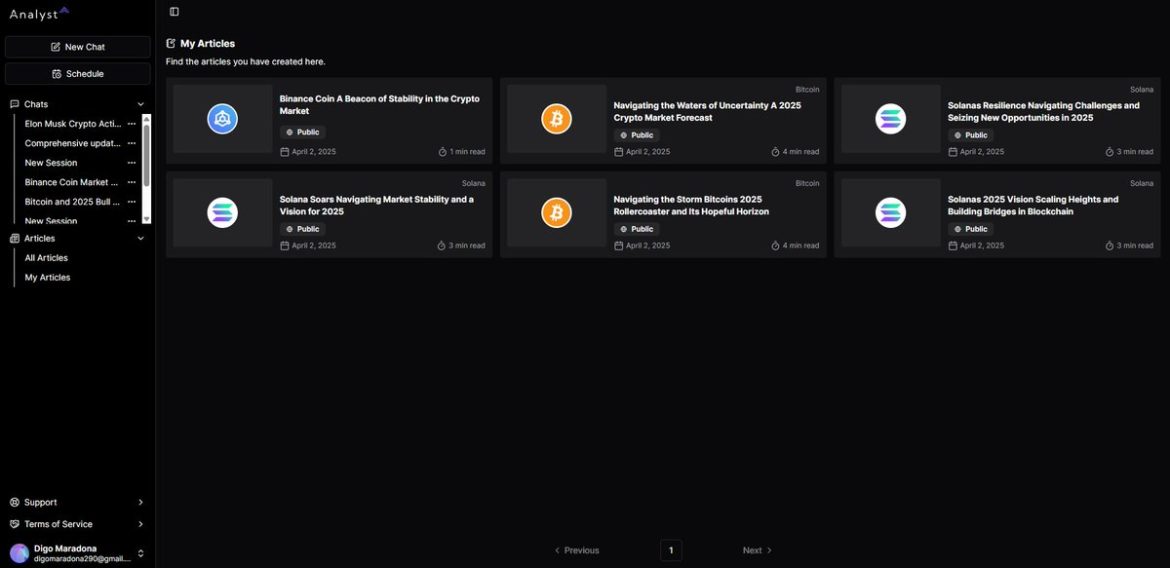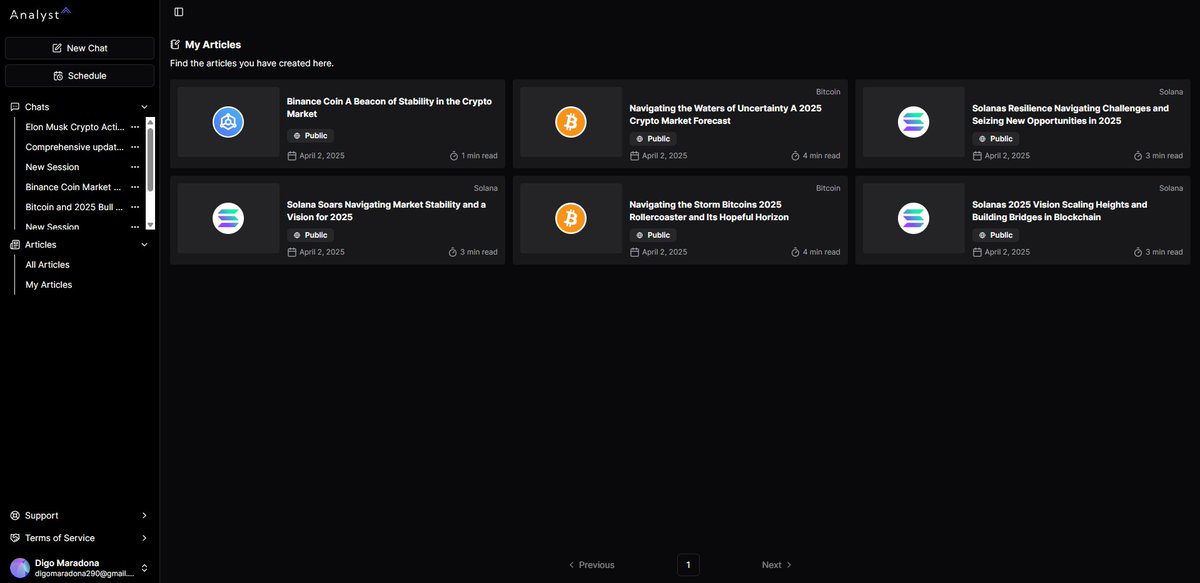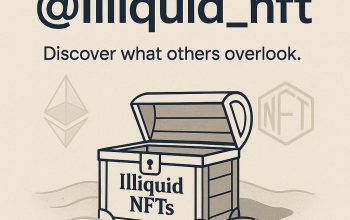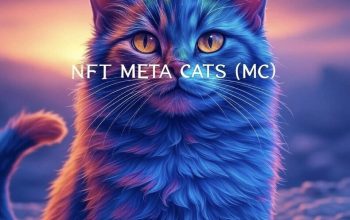The Intersection of AI and Web3: A Data-Driven Insight
Imagine a world where artificial intelligence (AI) and Web3 technologies converge to create unprecedented opportunities and transform industries. As we approach 2025, this convergence is not just a futuristic dream but a reality unfolding before our eyes. This report explores the dynamics of this intersection, its current trends, key players, and future prospects, offering a comprehensive analysis for enthusiasts and investors alike.
The Rise of AI in Web3
AI-Driven Insights and Analytics
The digital age has seen AI revolutionize data processing and analysis. In the Web3 ecosystem, AI-driven insights are becoming essential. Platforms like Exponent AI are leading this revolution, providing data-driven insights that empower users to make informed decisions. The integration of AI in Web3 enables more accurate predictions, enhanced security, and improved user experiences. For example, Exponent AI’s analysis tools offer actionable insights, helping users navigate the complex Web3 landscape with confidence.
AI’s ability to process vast amounts of data quickly and accurately makes it an invaluable tool in the Web3 space. By analyzing patterns and trends, AI can provide predictive analytics that help users anticipate market movements and make strategic decisions. This capability is particularly useful in decentralized finance (DeFi) and non-fungible token (NFT) markets, where volatility and uncertainty are common.
Enhancing Security and Transparency
Security and transparency are critical challenges in the Web3 space. AI can significantly enhance these aspects by leveraging machine learning algorithms to detect anomalies and potential threats in real-time. This proactive approach to security can prevent fraudulent activities and ensure the integrity of Web3 platforms.
Moreover, AI can improve transparency by providing auditable trails and ensuring that all transactions are verifiable and tamper-proof. Blockchain technology, the backbone of Web3, already offers a high degree of transparency. However, AI can take this a step further by analyzing transaction data to identify suspicious activities and ensure compliance with regulatory standards. This dual approach of enhanced security and transparency can build trust among users and investors, fostering a more robust and reliable Web3 ecosystem.
Key Players and Innovations
NFT Marketplaces and Gaming Ecosystems
The NFT market has experienced remarkable growth, with platforms like Ronin Network emerging as leaders in the NFT gaming ecosystem. As of 2025, Ronin Network has recorded 153.4K total sales transactions, generating $11M in total volume. With 30.6K unique buyers and 31.4K sellers, and 90 active NFT collections, Ronin Network exemplifies the potential of AI and Web3 integration in the gaming industry.
AI can enhance user engagement in NFT marketplaces by providing personalized recommendations based on user preferences and behavior. This personalized approach can make the NFT experience more immersive and profitable for users. Additionally, AI can optimize pricing strategies by analyzing market trends and user demand, ensuring that NFTs are priced competitively and fairly.
Tokenomics and Investment Opportunities
The tokenomics of Web3 projects are crucial for their success. Projects like RusCoin and AURAxCAPITAL are leveraging AI to optimize their tokenomics and investment strategies. For instance, RusCoin’s roadmap includes token burning, NFT collections, and stablecoin integration, all designed to create a sustainable and valuable ecosystem. AURAxCAPITAL’s AMA sessions provide detailed analyses of such roadmaps, helping investors make informed decisions.
AI can lead to more efficient allocation of resources, better liquidity management, and increased investor confidence. By analyzing market data and user behavior, AI can identify optimal times for token issuance, burning, and distribution, ensuring that the project’s tokenomics are aligned with market conditions and user needs. This data-driven approach can enhance the sustainability and value of Web3 projects, making them more attractive to investors.
AI Tokens and Their Potential
AI tokens like $PIKA are gaining traction in the Web3 space. $PIKA, built on the Solana blockchain, has high potential due to its focus on NFT/DeFi innovation. However, it is still untested in the market, making it a speculative investment. VectAI’s analysis of $PIKA highlights the importance of transparency and clear ownership in AI tokens. As the market matures, AI tokens are expected to play a significant role in driving innovation and creating new opportunities.
AI tokens represent a new asset class that combines the benefits of AI and blockchain technology. These tokens can be used to access AI-driven services, participate in governance, and stake in decentralized networks. The potential of AI tokens lies in their ability to create new economic models and incentivize innovation. However, as with any new technology, there are risks and uncertainties associated with AI tokens. Investors should conduct thorough research and due diligence before investing in AI tokens.
The Future of AI and Web3
Emerging Trends and Opportunities
The future of AI and Web3 is bright, with several emerging trends and opportunities. One of the most exciting trends is the integration of AI in decentralized finance (DeFi). AI can enhance the efficiency and security of DeFi platforms, making them more accessible and user-friendly. For example, AI can automate risk management, optimize lending and borrowing rates, and provide personalized financial advice.
Additionally, the use of AI in decentralized autonomous organizations (DAOs) can improve governance and decision-making processes. AI can analyze voting patterns, identify potential conflicts, and provide recommendations to ensure fair and transparent governance. This can lead to more inclusive and democratic DAOs, where all members have an equal say in decision-making.
Challenges and Considerations
While the potential of AI and Web3 is immense, there are also challenges and considerations to keep in mind. One of the main challenges is ensuring the ethical use of AI. As AI becomes more integrated into Web3 platforms, it is crucial to address issues like data privacy, bias, and accountability. AI algorithms can inadvertently perpetuate biases present in the training data, leading to unfair outcomes.
Additionally, the regulatory landscape for AI and Web3 is still evolving. Stakeholders need to stay informed about the latest developments to navigate the space effectively. Regulatory frameworks should balance innovation and protection, ensuring that AI and Web3 technologies can thrive while safeguarding user rights and interests.
Conclusion: Embracing the Future
The intersection of AI and Web3 is transforming the digital landscape, creating new opportunities and challenges. As we move forward, it is essential to embrace the potential of AI and Web3 while addressing the associated challenges. By leveraging AI-driven insights, enhancing security and transparency, and staying informed about emerging trends, we can build a more innovative, inclusive, and sustainable digital future.
The convergence of AI and Web3 represents a paradigm shift in how we interact with technology and each other. It offers the promise of a more decentralized, transparent, and efficient digital ecosystem. However, realizing this promise requires a concerted effort from all stakeholders, including developers, investors, regulators, and users. Together, we can shape a future where AI and Web3 work in harmony to create a better world.





